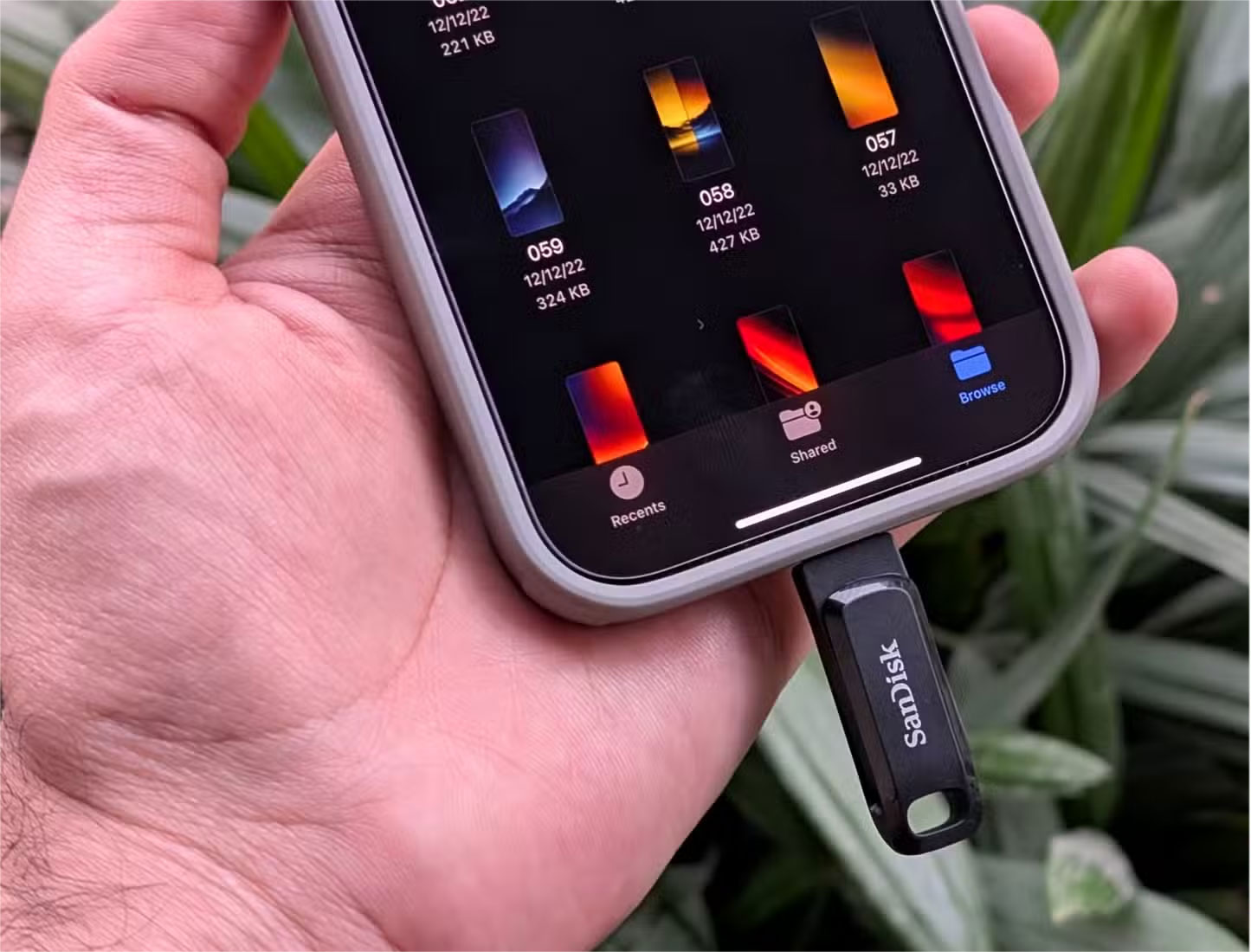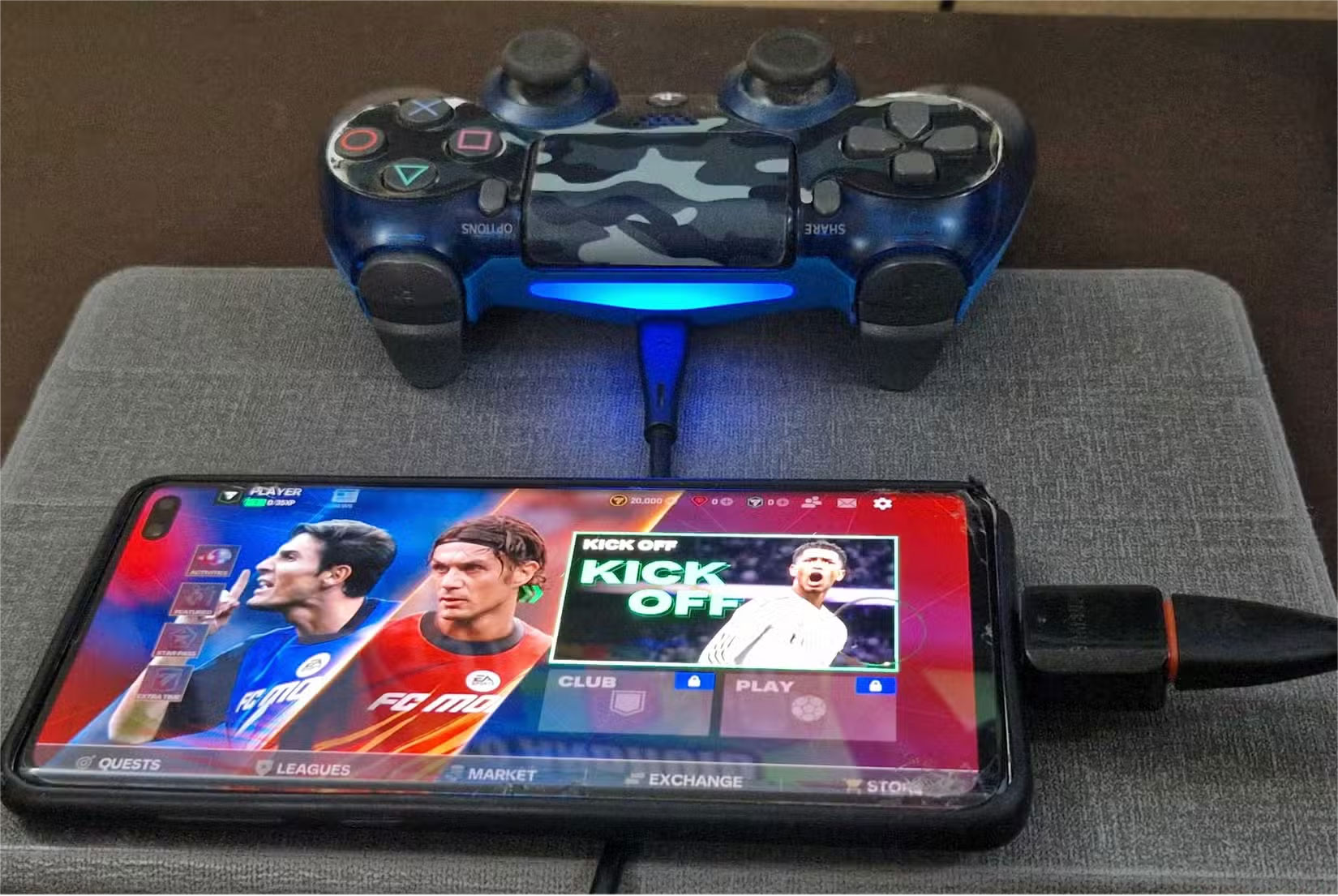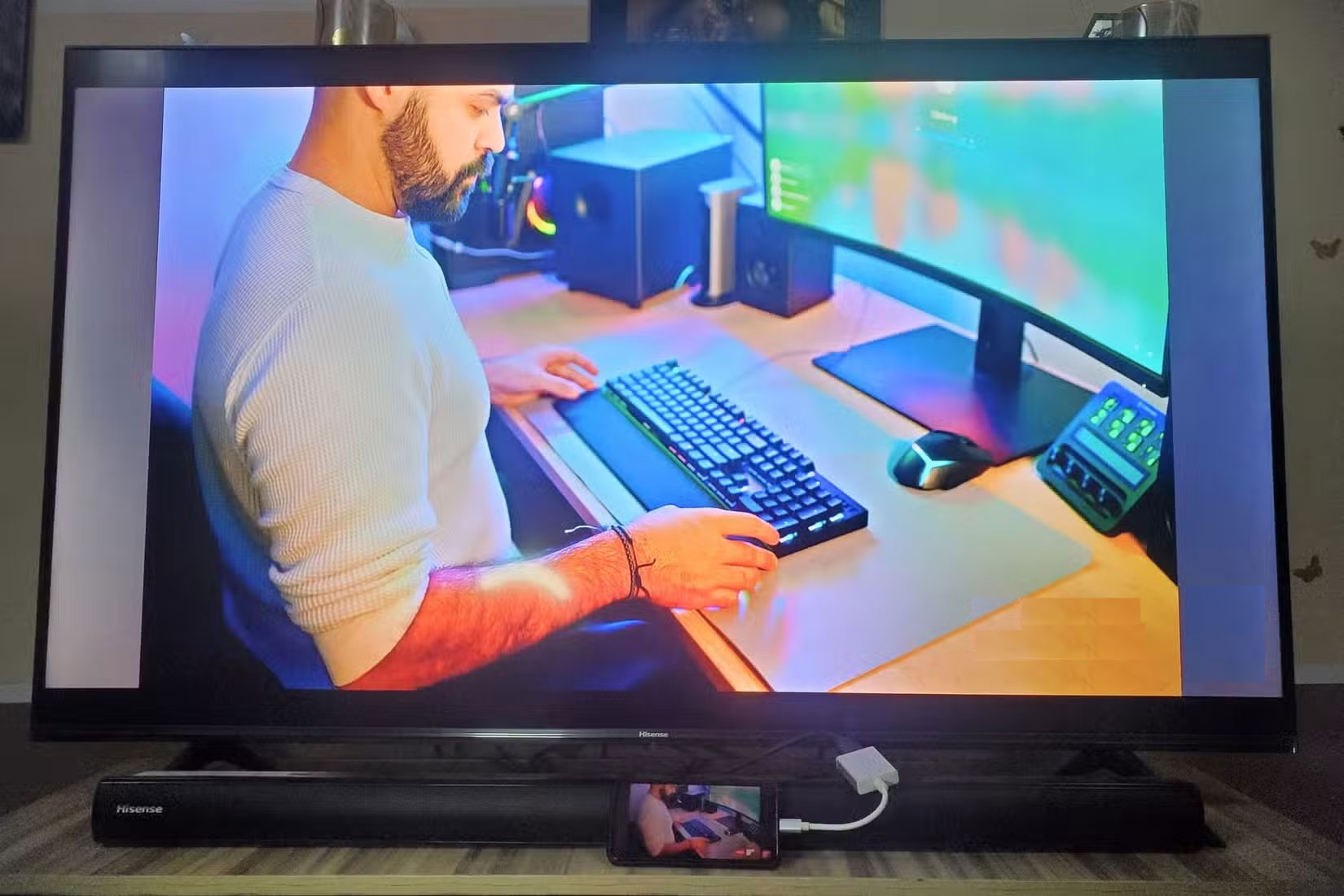10 devices that can be plugged into the smartphone charging port
Most of us treat our smartphone's charging port as if its sole job is to keep the battery alive. But that little port is much more powerful than it's given credit for. Your phone can do a lot more than you expect if you know how to use it.
- 9 Awesome USB-C Gadgets You Didn't Know You Needed
10. Flash drives and external hard drives

When your phone starts to struggle under the weight of thousands of photos, random downloads you don't remember saving, or large videos, sometimes the easiest fix is to plug in a flash drive or external hard drive and move the data to it. It's also incredibly handy when you want to quickly watch, read, or listen to something without having to bother with file transfers or cloud syncing. All you need is a USB OTG (On-The-Go) adapter—or, if your phone supports it, a USB-C flash drive.
External hard drives can be a little trickier. Most portable hard drives draw power directly from your phone, and unless you're using something lightweight like the Samsung T7, your phone won't have enough power to keep the drive spinning. In those cases, a self-powered drive (one that plugs into an outlet) is much more reliable. Additionally, a USB hub with a power supply can help bridge the gap if your drive doesn't power directly.
9. Game controller

Mobile gaming is great fun, but touchscreen controls are rarely the best option. Thankfully, you can plug a game controller into your smartphone's charging port and instantly upgrade your experience. Whether it's an Xbox or PlayStation controller, all you need is the right USB cable for the controller and maybe an OTG adapter. You can also get a dedicated mobile controller that clips directly onto your phone.
8. Keyboard and mouse

If you want to turn your phone into a computer, connecting a keyboard and mouse can make tasks like writing, emailing, and light spreadsheets much more comfortable. With a USB-C or Lightning-to-USB OTG adapter, you can plug wired peripherals directly into your phone's charging port.
Most USB keyboards and mice are plug and play on both Android and iOS, so no additional drivers are required.
7. Ethernet cable
When Wi-Fi fails or is unavailable, you can plug in an Ethernet cable to give your smartphone a stable, high-speed wired Internet connection.
To use it, you'll need a USB-C-to-Ethernet adapter for most Android phones and newer iPhones. If you have an older iPhone, you'll need a Lightning-to-Ethernet adapter. Your phone will automatically detect the connection and prioritize it over any wireless connections.
6. Projector
Many modern smartphones can push video out of their USB-C ports using something called DisplayPort Alt Mode. In simple terms, this allows you to connect your phone to a projector using a USB-C to HDMI (or even USB-C to VGA) adapter. In most cases, your phone will automatically detect the connection and start projecting its screen.
5. DSLR Camera
If you like to shoot on the go, you can transfer photos and videos from your DSLR directly to your phone using a USB-C or Lightning-to-USB adapter. With a camera-compatible cable, this transfer option allows for quick editing and sharing without having to wait for the files to return to your computer. However, you'll need to confirm that your camera is powered on and supports USB transfer mode.
Many Android phones recognize connected cameras immediately, while iPhones support importing photos via the Photos app.
4. Printer
There are plenty of times when the option to print directly from your phone can be useful. Maybe someone sends you a document via WhatsApp or email and your computer is out of reach or you don't want to transfer the file to your PC first.
Most smartphones can automatically recognize USB printers, provided you're using the correct adapter.
3. MIDI Controller or audio interface
If you're into music production, you'll be glad to know that your smartphone can handle the same rigging you'd normally reserve for your laptop or desktop. Plug the controller's USB cable into the OTG adapter, then plug the adapter into your phone's charging port.
From there, you can launch a compatible app like GarageBand , Walk Band , BandLab , or FL Studio and adjust the settings to make sure the app detects your controller. Some apps will automatically recognize the controller, while others may require manual MIDI mapping.
2. External microphone
Depending on what type of microphone you have, there are a few ways to connect it to your phone. The easiest option is to use a microphone designed specifically for the phone port. These days, you'll find quite a few high-quality USB-C and Lightning microphones (e.g., Mini Mic Pro, HEHOTTC M2 Mic, GoorDik Lavalier Mic, etc.) that are truly plug-and-play. Simply connect the microphone to your phone's charging port and it will automatically override the built-in microphone. Your phone will immediately start using the external microphone as its main input without any special apps required.
1. TV or monitor

Connecting your phone to a TV or monitor works much like connecting to a projector, as mentioned above. The important thing to note is that your phone must support DisplayPort Alt Mode for this feature to work.
If you're using a Samsung Galaxy device, you're in for a great upgrade: Samsung DeX . It turns your phone's interface into a desktop-style workspace.
You should read it
- How to Clean the Charging Port
- Ways to make charging faster for smartphones
- How to clean the iPhone charging port
- Top fastest smartphone in the world
- 3 ways to clean the Lightning charging port help iPhone charge faster
- Interesting error, ASUS ROG Phone became the first smartphone in the world to know 'charging itself'
 How to easily read smartphone specifications
How to easily read smartphone specifications 7 Ways Smartphones Are Getting Worse
7 Ways Smartphones Are Getting Worse How to use Apple Invites to create events
How to use Apple Invites to create events Take 5 minutes now to check out these emergency Android features!
Take 5 minutes now to check out these emergency Android features! How to stop AirPods from automatically switching devices
How to stop AirPods from automatically switching devices These iCloud Settings Are Taking Up Your Storage: Here's How to Fix It!
These iCloud Settings Are Taking Up Your Storage: Here's How to Fix It!